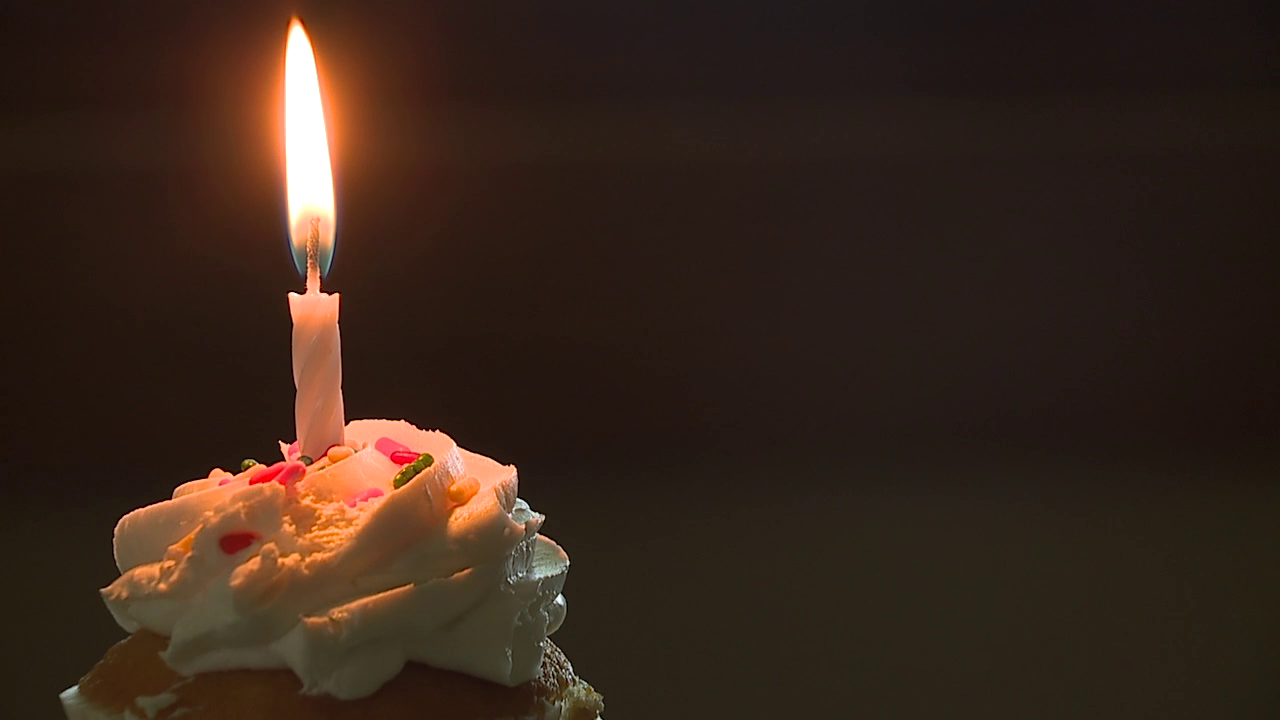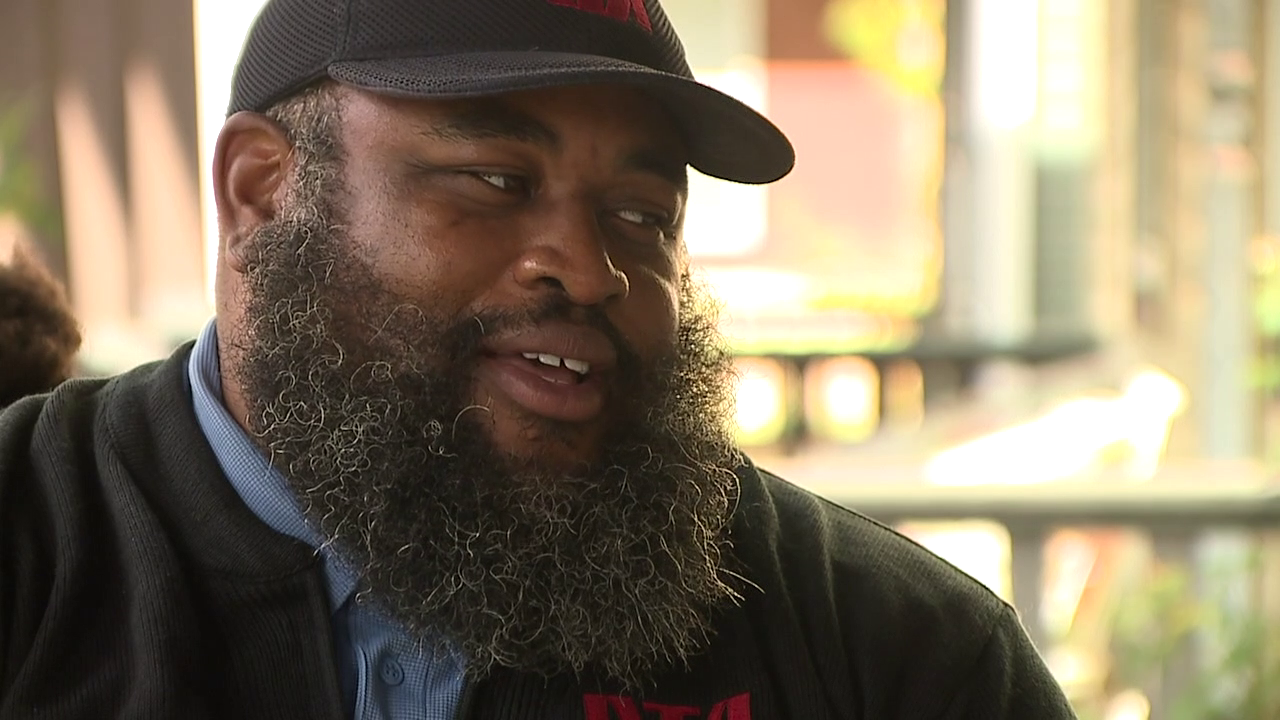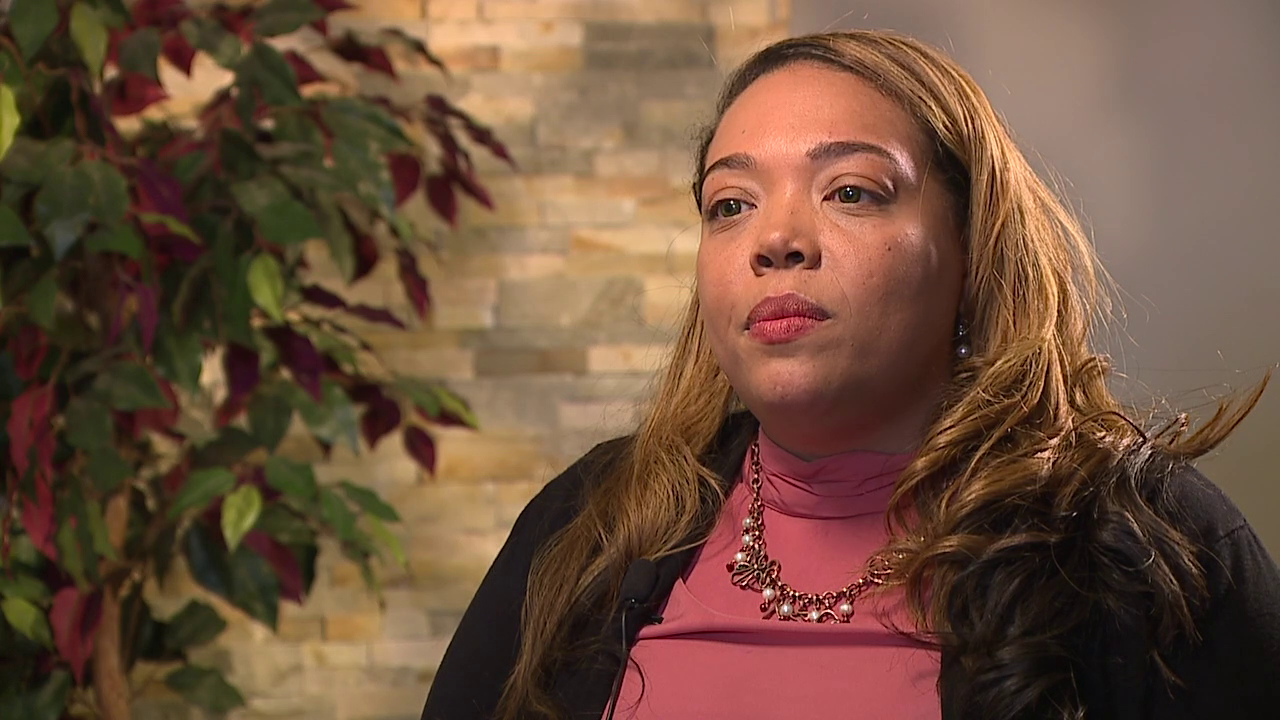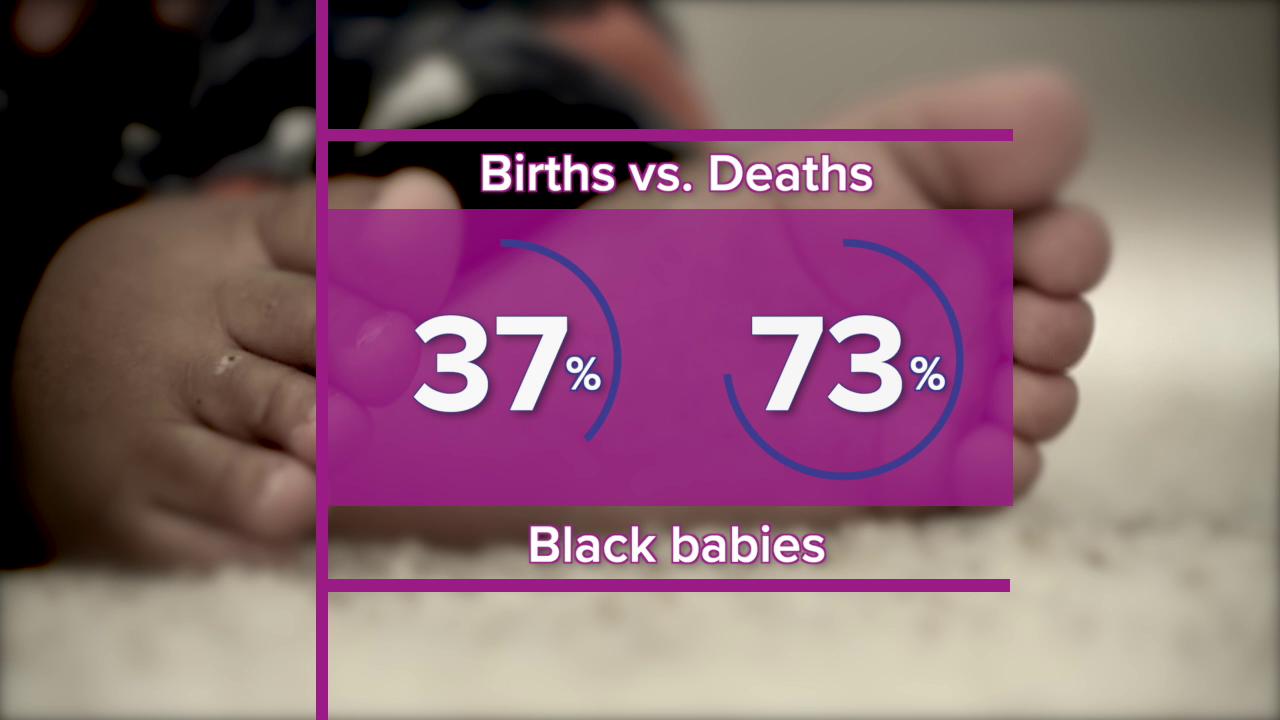CLEVELAND — You are about to hear some tough stories of loss.
They surround the pregnancies of Black women— who are disproportionately impacted by pregnancy-related loss.
Ohio ranks as one of the worst states in the country when it comes to infant mortality rates.
According to the Ohio Department of Health, for every thousand babies born in the state, 6.7 will die.
But for Black babies, that number is even worse. Statewide, the infant mortality rate for Black babies increases to 13.6 for every thousand babies born.
In Ohio, Black babies are 2.7 times more likely to die before their first birthday.
As for Black expectant mothers here in Ohio, they’re two and half times more likely to die of a pregnancy-related cause compared to white women.

Sierra and Ramathmizpeh Warith
Motherhood just seemed to come naturally for Sierra Warith.
“Me and Sierra was a good team, so when I went to work, she cared for Junior – he was her first son,” said Sierra’s husband Ramathmizpeh Warith. “They were really, really close.”
Warith shared a video from Junior’s first birthday; he said at that time, Sierra was also carrying their second son, Zephiniah.

“It was just rough on her body cause she wasn’t fully healed from the first pregnancy,” he said. “My goal was to have six kids. Of course, she was like, ‘I ain’t giving you six kids!’”
Just a few months into the pandemic, Sierra started feeling worse during her second pregnancy.
“I believe I caught COVID,” Warith said. “Brought it home to her. She was 30 weeks pregnant.”

By the close of Mother’s Day weekend in May 2020, Sierra was in an ambulance, on the way to the hospital, with chest pain, struggling to breathe.
“They basically said OK, she’s got pneumonia now, and so they couldn’t treat her, you know, with Zephiniah inside of her, so they said, in order to treat her, they had to take Zephiniah out of her,” Warith said.
He wasn’t able to see his wife due to COVID restrictions.
They talked by phone before Sierra was put into a medically induced coma.
Zephiniah was delivered by cesarean section, but Sierra never woke up.

“They were trying to bring her back, but she wasn’t waking up,” Warith said. “I’m thinking, ‘She can’t die! We just got married!’ You know, we just got married, we just had the baby.”
But a month after Zephiniah was born, and just a day before her 24th birthday, Sierra died.
“I miss my wife dearly – madly in love, you know, still love her,” Warith said.

Warith was thrust into the life of a widower, having to raise two young boys without the woman he so loved.
“I was broken,” he said. “It’s been rough. It's really been rough.”

Samantha Williams-Pierce and Ronald Pierce
Birthdays are milestones Samantha Williams-Pierce and Ronald Pierce don’t take for granted.
“I feel a lot of things today, just relief,” Samantha Williams-Pierce said. “They’ve made it for 12 years. Hoping to keep them safe for another couple of years.”

On a September day, the couple, along with family and friends, celebrated the birthday of their twins, Caedyen and Camryn.
“These are my rainbow babies,” Williams-Pierce said.
“Rainbow babies” are children that are born after a previous loss in the family.
Before Caedyen and Camryn, there were Christyan and Jayden – the first set of twins Williams-Pierce would give birth to.

“At first I was really put off,” she said. “At first like – what? Like, what am I supposed to do with two babies, I only really wanted one!”
Around 21 weeks into the pregnancy, Williams-Pierce started leaking fluid.
“I’m telling her what’s going on and Carol [her doctor] is like, ‘Yeah, Sam I think you need to come in and let us take a look at you,’” she said. “But I had this grant going in. I was the COO of my company and it was going to basically expand our company.”
She reluctantly went to the doctor.
“He looks at me and he goes, ‘We’re going to have to keep you. You’re leaking too much fluid. We think it’s amniotic fluid and that’s a problem,’” Williams-Pierce said. “And I’m fighting the whole time, ‘Oh naw, I gotta get back to work.’”
But Williams-Pierce knew she couldn’t leave. About a week into her hospital stay, her water broke.
“They come in and sure enough, you know, the umbilical cord is basically hanging,” she said. “The only thing that they told us is that, ‘I don’t know what to expect you’re going to see here.’ Because we were so early on.”
They knew their babies weren’t going to survive. Piece-Williams’s husband explained what they were thinking when they learned that.
“She was thinking a lot,” Ron Pierce said. “But you also don’t know what to think because you didn’t prepare for that. That wasn’t what you expected.”
On a Friday night, in July of 2009, Christyan was born, and Pierce held him as his fatherly instincts took over.

“Ron was telling him how to be a big brother in heaven,” Pierce-Williams said. “You know, take up for your little brother. It was just that kind of moment. Like he’s just basically blurting out all the things that he can think of to tell him. It was weird to have to sit through that. Like, why are we here doing this?”
Jayden was delivered early Saturday.

“I kept saying, Jayden looked just like you,” Pierce-Williams said. “Perfect little beautiful babies.”
Maternal and infant mortality in Northeast Ohio
Here in Ohio, stories like Pierce-Williams's are more common in the Black community, and locally, things are especially bad.
Dr. Heather Rice, assistant professor and researcher at Cleveland State University College of Health, School of Nursing, has been researching ways to prevent maternal and infant mortality since 2019, looking at Black families in the Cleveland area.

“Cuyahoga County, specifically, is one of the highest for mortality rates” in the country, Rice said.
Rice said that in Cuyahoga and Summit counties, Black women face two to three times the risk for maternal mortality.

“I was actually at a conference and was asked, ‘Who do you believe was the worst risk?’ – it had different answers, and one was a Ph.D-prepared Black woman,” Rice said. “Would you believe she had the highest risk? And there was a caucasian female in high school, and there were some other selections, and I did not believe that a Ph.D-prepared woman, being one, had the highest risk.”
Rice adds that she’s also looked at the infant mortality rates— and Black babies account for about 37% of births, but make up 73% of infant deaths.

“I have found that we do have some great things here in the city that can support our Black moms when it comes to these maternal mortality concerns and infant mortality concerns,” she said. “I feel that being able to connect the mothers to those opportunities, it’s so important because we notice that their outcomes improve.”
As for Warith, Williams-Pierce and Pierce, death changed them and their perspective. Even as they move forward in life, their losses will never be forgotten.
“To me, any birthday is significant,” Pierce said. “It’s always a significant thing, but it always brings us back to the same spot, because we know what we’ve gone through. We know what we lost.”

Next week, News 5’s Courtney Gousman will have another report about some of the things being done here locally that can improve the chances a mother and her baby will make it safely through pregnancy, delivery, and beyond.
We’ll also explore the factors that are proving detrimental — and even deadly – to Black mothers and their babies. This is a subject that is close to Courtney’s heart, because at the age of 15, she lost her mother, who was six months pregnant at the time.
Courtney shares her experience with that loss in an essay published here.
Download the News 5 Cleveland app now for more stories from us, plus alerts on major news, the latest weather forecast, traffic information and much more. Download now on your Apple device here, and your Android device here.
You can also catch News 5 Cleveland on Roku, Apple TV, Amazon Fire TV, YouTube TV, DIRECTV NOW, Hulu Live and more. We're also on Amazon Alexa devices. Learn more about our streaming options here.




